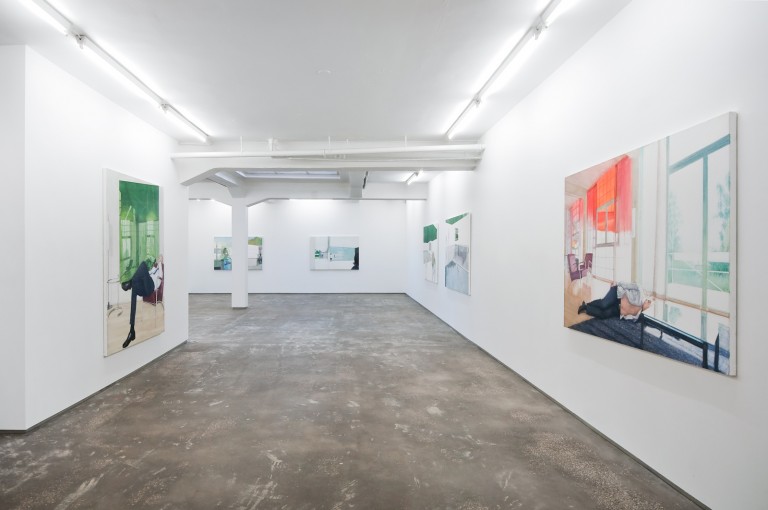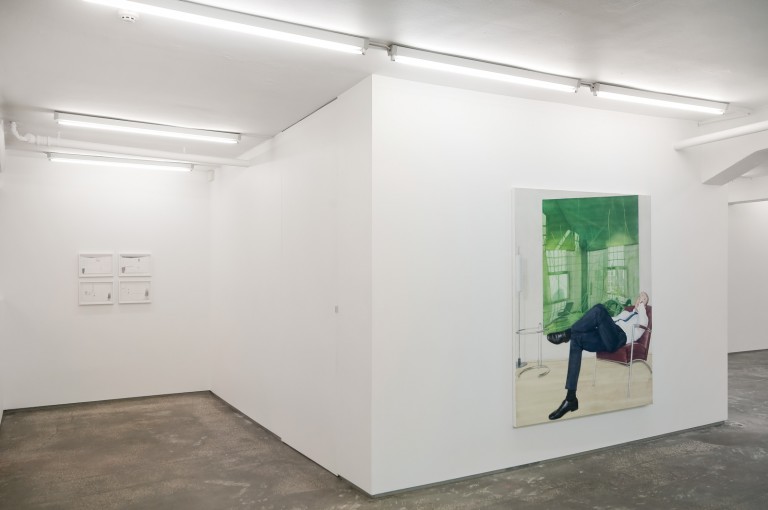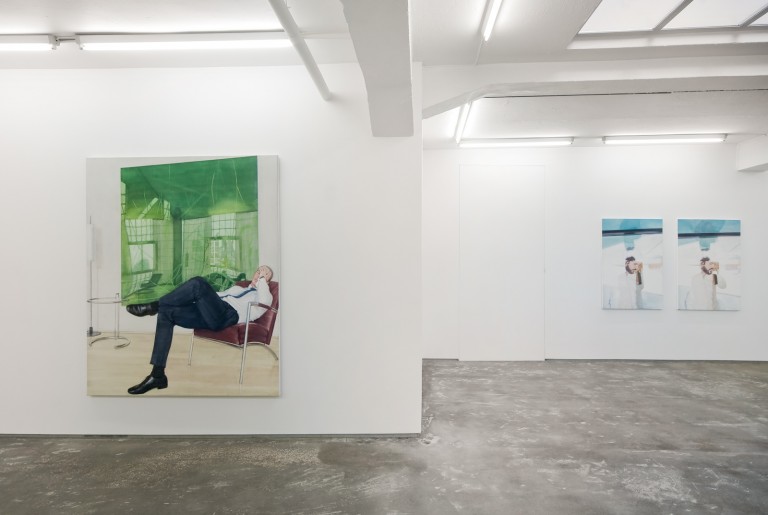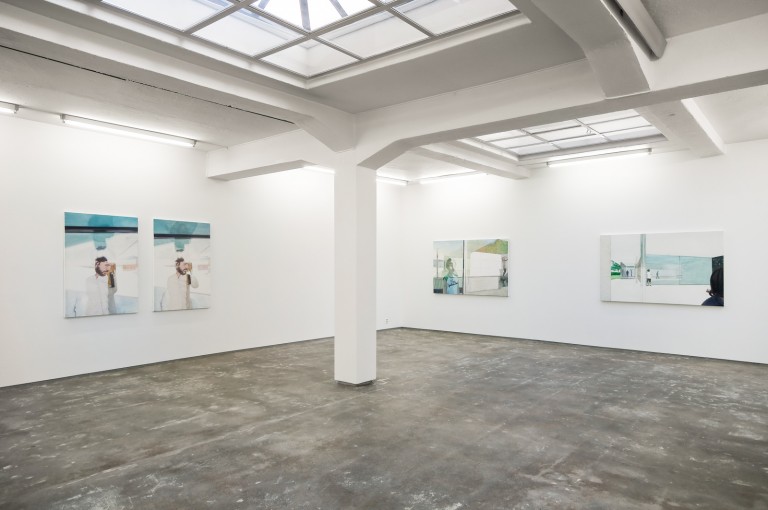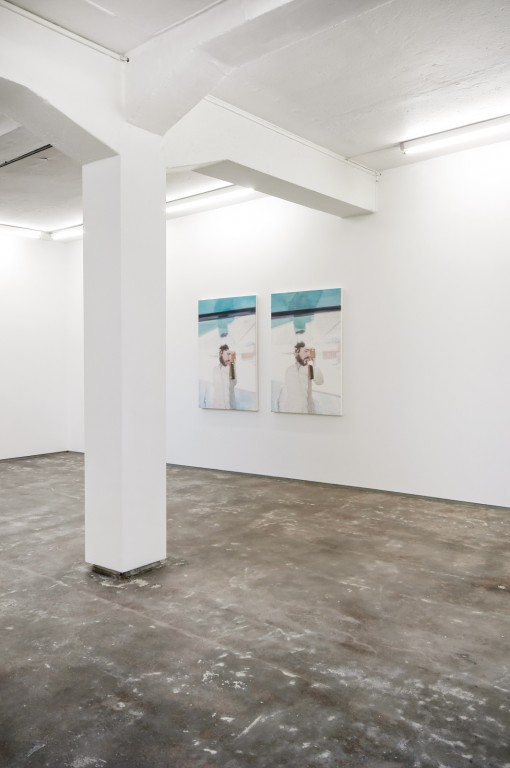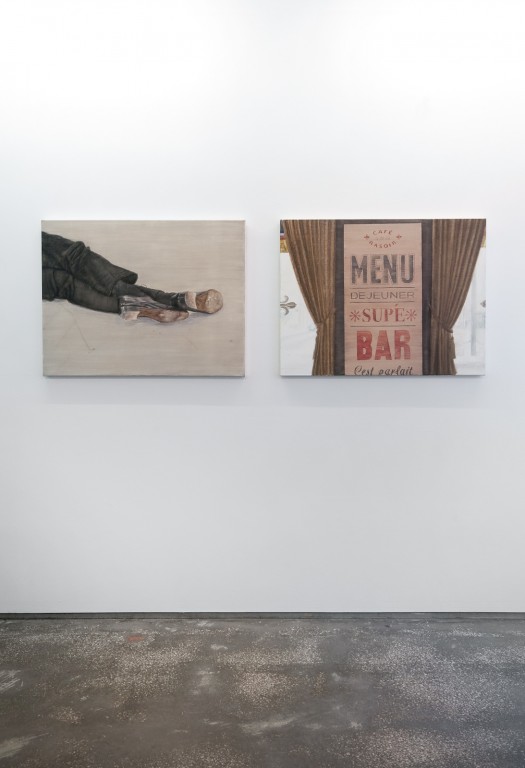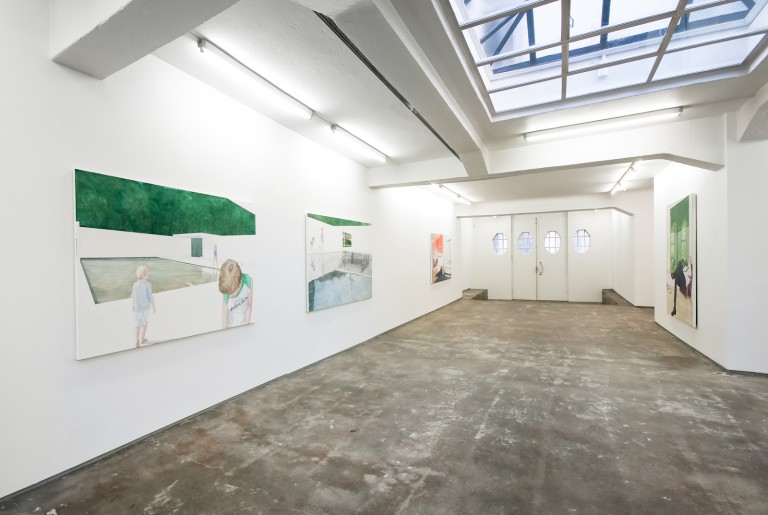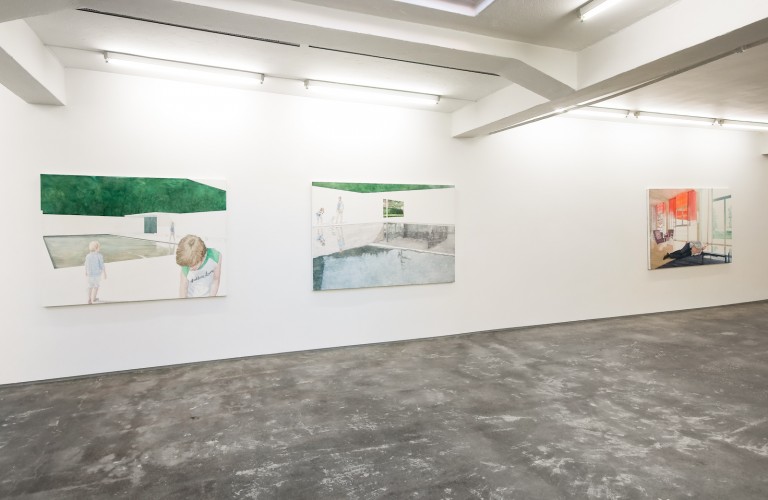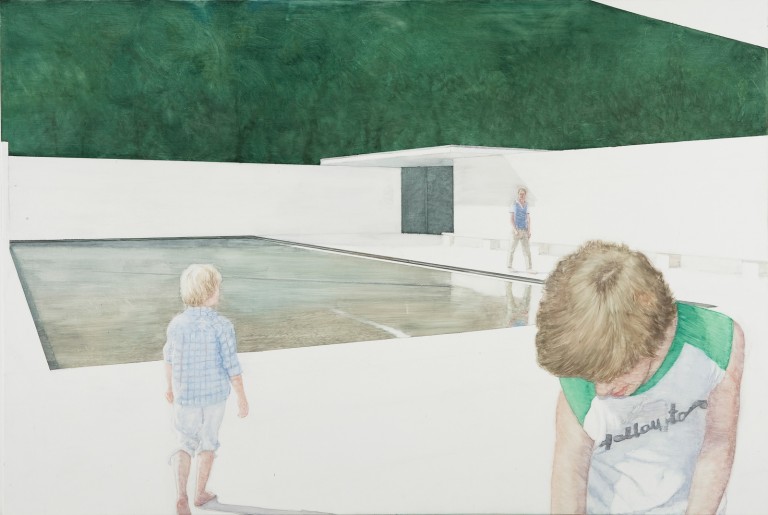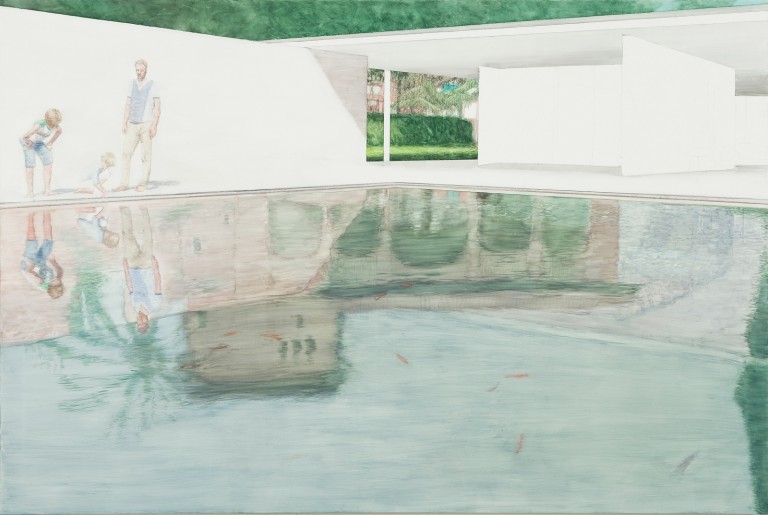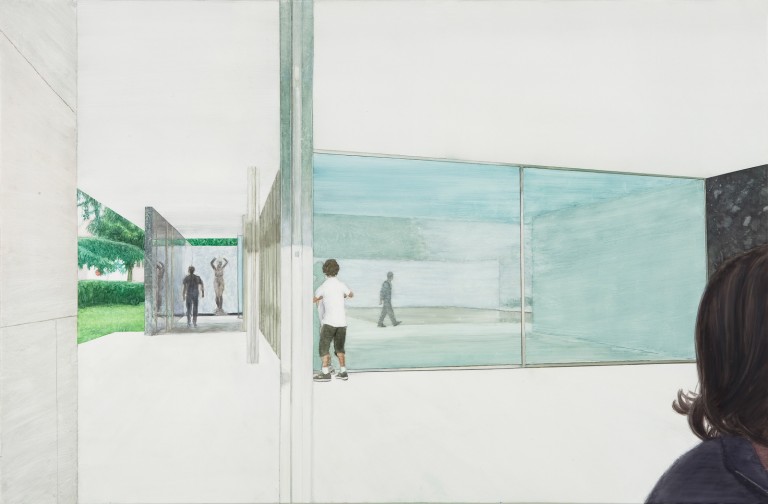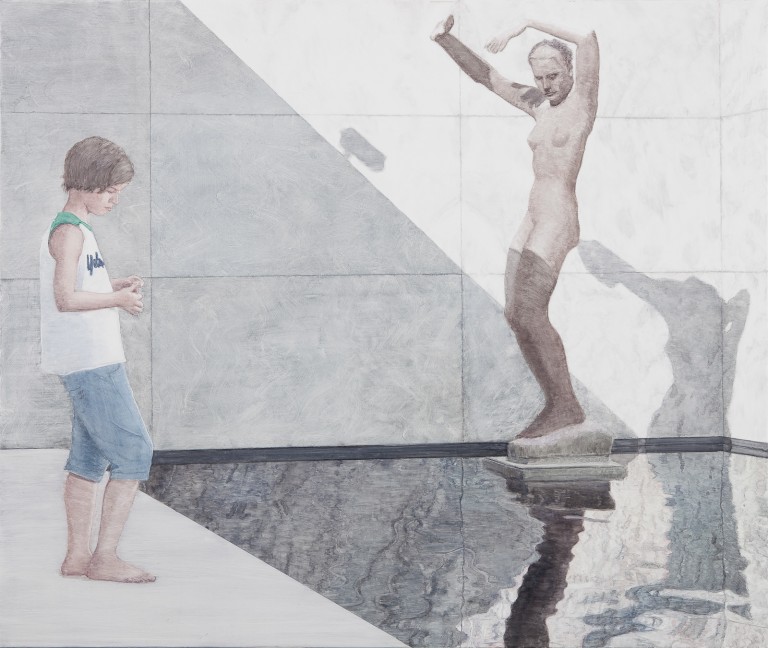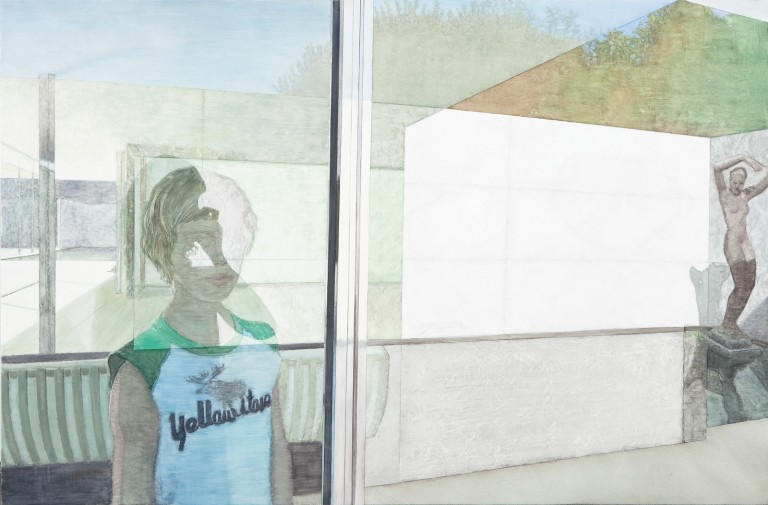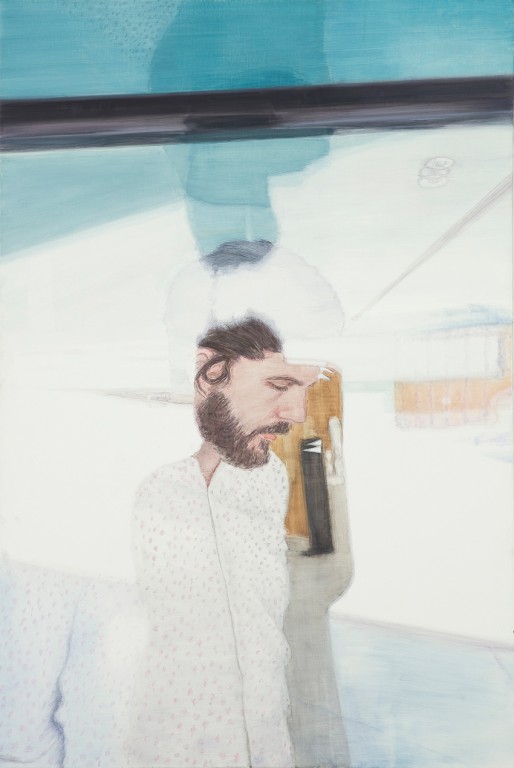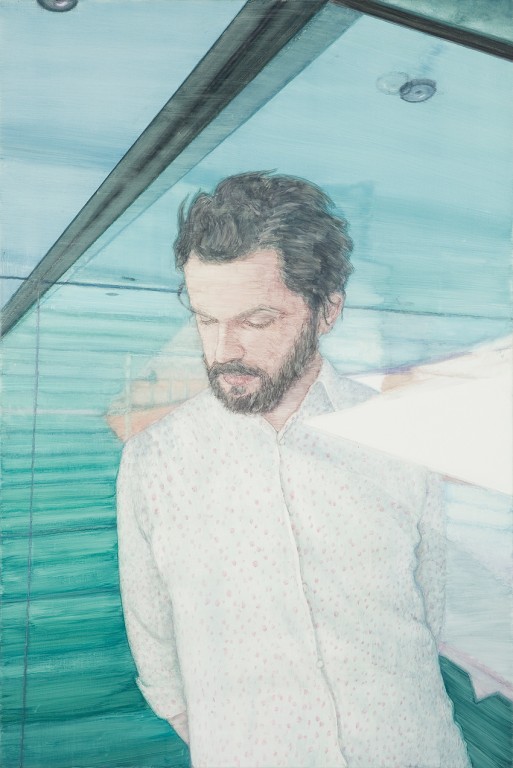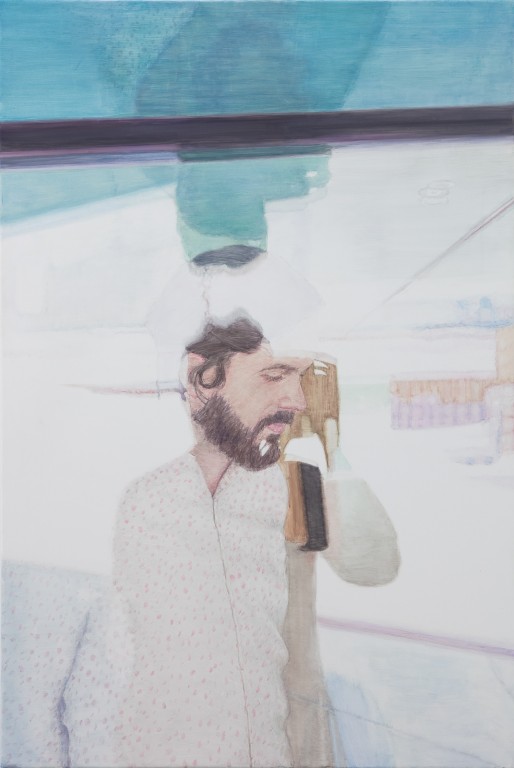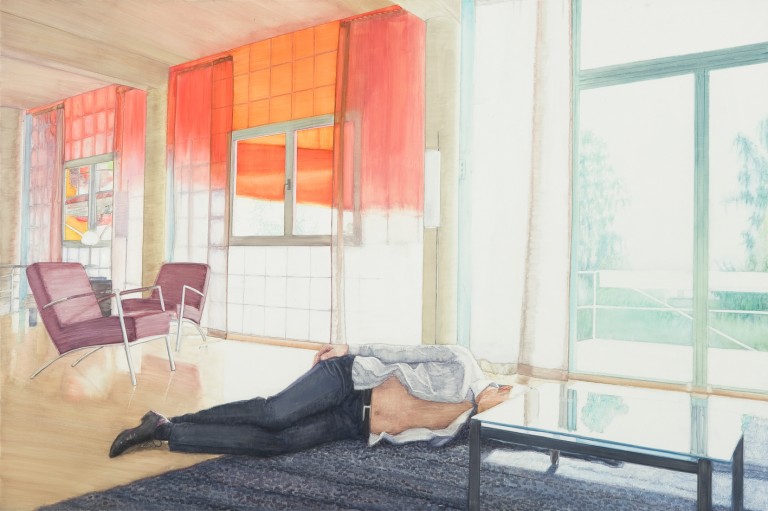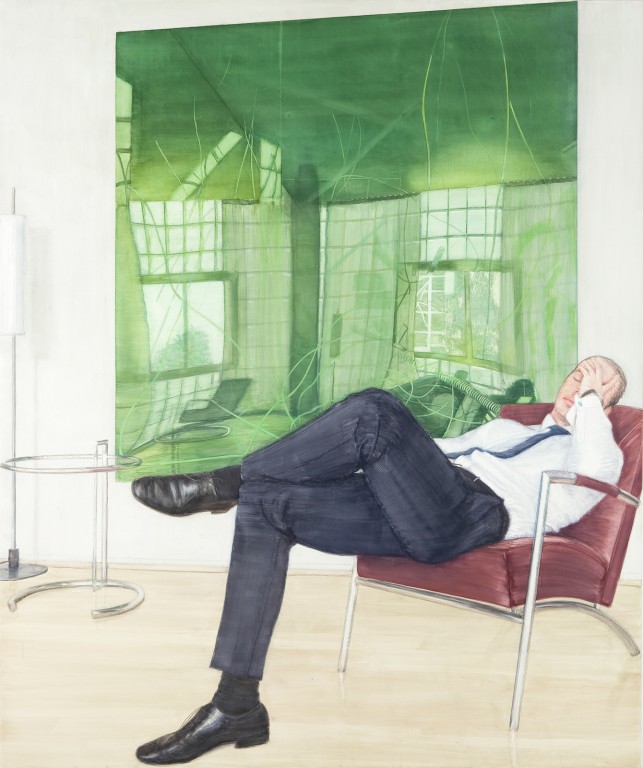OSL contemporary is delighted to present their fourth exhibition with Vibeke Slyngstad (b.1968). The exhibition features new paintings that continue her series, “Modern Classics,” begun in 2004. The past year Slyngstad has lived in Barcelona, which has inspired several of the works in this show. This is the first time that Slyngstad exhibits in Norway since her participation in Elmgreen and Dragset’s curated contribution to the 2009 Venice Biennale. During 2010 Slyngstad had a solo exhibition at Christian Larsen in Stockholm, and participated in a site-specific group show “polis, polis, potatismos“ curated by Jacob Fabricius and presented in the Malmo Kunsthall. In February 2012, she will be part of a group exhibition at Arario Gallery in Seoul, South Korea.
In the exhibition “my shadow falls at random”, Slyngstad expands the series “Modern Classics” in which she uses Modernist architecture as the starting point of the paintings. She approaches her subject through a process of compiling sketches and photographs, and the resultant composition is built up through the use of these numerous source materials. This process is an important facet of Slyngstad’s production methodology, and a foundation for the finished paintings.
Two signature buildings, Arne Korsmos’ “Villa Stenersen” and Mies van der Rohes, “Barcelona Pavilion”, dominate the exhibition’s focus. In the works from Villa Stenersen we meet again the businessman familiar from earlier Slyngstad paintings, here presented lying on the floor and seated, exhausted, in a chair. The narrative is unresolved and various interpretations come and go during the viewer’s contemplation of the image, similar to emotionally loaded film stills. This ambiguity evokes a tension when viewed in the context of the iconic quality of the building, representing the functional and forward- looking vision of Modernist life.
In the paintings from “The Barcelona Pavilion”, Slyngstad investigates one of the Modernist movements most significant monuments. In these works, the focus has shifted; the figures have become more prominent while the building’s clean lines and elements of glass, steel, marble and water become more transparent, in some works, even fading completely to white. Within this rational environment, Slyngstad introduces personal, familiar subjects. In their portrayal of children’s’ exploration of the architecture, the paintings’ psychological and social content is emphasized more than in the other works. The images appear simultaneously as random documentations or snapshots, and as deeper, penetrating portraits. Architecture’s influence on humans is central to the works, and Mies van der Rohes’ poetic quest to create clear, clean and orderly spaces is mirrored by the children’s’ innocent engagement with the pavilion.
The evolution that one sees in the paintings from “The Barcelona Pavilion” is also found in Slyngstad’s portraits of the musician Thomas Dybdahl at the Opera building in Oslo. In these works, both the portrait’s subject and the photographer are reflected by the building. The artist, represented as the photographer in the painting, glides together with the subject and they both are enlarged in the buildings architectural facets, sliding into abstract forms.

